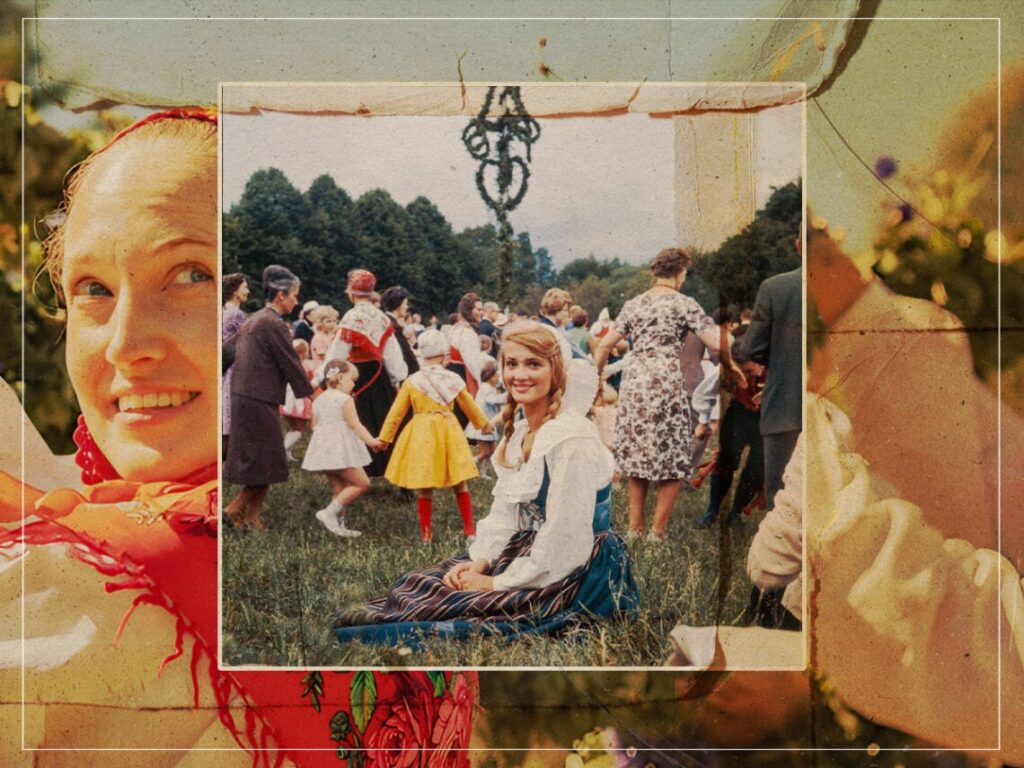Midsummer in Skansen: Captivating elements of traditional Swedish heritage
 Posted On
Posted On
(Credits: Far Out / Okänd / Skansen)
To some, the idea of a sky that never grows dark is the stuff of nightmares. Perhaps that was the reason why Ari Aster envisioned the perfect horror story in Midsommar: a place where darkness can thrive, and people can live out their most occult-like, insidious fantasy, even in environments where the sun refuses to set.
However, unlike the A24 movie, real midsummer celebrations are beautiful—with gatherings that form only to enjoy and celebrate a rich array of Swedish customs and folklore. Instead of rituals, they enjoy games and spectacles, and instead of psychedelics, they like to consume traditional Swedish food. In fact, the summer solstice, to many, represents a deep connection with nature, fertility, and magic.
Dating back to pre-Christian times, midsummer is said to have stemmed from Pagan rituals that celebrated the sun and fertility, which broadly formed the basis of Aster’s horror. In reality, however, it originally symbolised a wood harvest and the warding off evil spirits. While some traditions have changed over the years, the celebration of nature at the crux of the festivities remains intact.
At the heart of midsummer lies the midsommarstång, the maypole, which is usually decorated with flowers and leaves. Usually, once it has been raised, communities dance around it to traditional Swedish music, creating a lively and energetic atmosphere. Without any point of reference, it’s easy to imagine the pivotal scene in Midsommar depicting just this, but the real version is a lot more elegant and far less sinister.
Throughout all of the events, attendees will wear flower crowns to represent their connection to nature, with many also dressing in traditional Swedish clothing, like 18th-century attire for the men and white dresses for the women. These celebrations are held all over the country, but one that’s hard to beat and one which hasn’t been soiled by modernisation is the annual event held at Skansen in Stockholm.
Since being founded in 1886, Skansen has been proud of its midsummer festivities, not just because it upholds the holiday’s traditional values but also because it provides an interesting and educational history on midsummer through the ages. The holiday hasn’t always been the same, and people still debate about whether it predated Christianity or morphed into its own thing.
However, this is one environment in which it all feels and looks as sacred as it should be. Even if you’re not Swedish, nor have little understanding of what exactly midsummer is or why it’s celebrated, the magic held at this particular place is hard to ignore. The ritualistic nature of a lot of the spectacles curated feels Paganistic, as it should, but with a modern Swedish edge.
Like watching the movie, there’s a sense of detachment if midsummer isn’t naturally in your bones, but also, like the movie, it feels like you can understand it all, even if you don’t know one Swedish word. Here’s one: Lagom. In Swedish, this is a concept rather than a lifestyle, one that means “not too much, but not too little”.
It’s a difficult balance to strike and one that’s usually used to describe a state of being rather than a place, but Skansen feels like one of the only places where midsummer feels accessible enough for the visitor without losing its cultural heritage. Because of this, it’s almost impossible to feel out of place. But perhaps most importantly, there’s an effortless sense of appreciation of nature all around.
Perhaps that’s what we’ve learned after years of midsummer celebrations. The ritualistic nature of the festivities might have once been somewhat exclusive, accessible only to those whose heritage beckons. Now, with the benefit of time, the holiday has transformed into a more worldwide rite of passage.
Many people might not understand the dancing around the maypole or the fixation with mysticism that it continues to uphold, but music and dance are universal. They bridge cultural gaps, allowing people to think a little differently—more mythological, perhaps. Every day of celebration at Skansen ends with dancing, and if there’s only one thing to learn from this, it’s that midsummer is largely rooted in instinctual feeling.
[embedded content]


